(Upload on June 30 2025) [ 日本語 | English ]
Mount Usu / Sarobetsu post-mined peatland
From left: Crater basin in 1986 and 2006. Cottongrass / Daylily
[ Objectives | Guidance (2021) | flora and fauna recorded (Japanese)]
[Field trip (野外実習), Field equipments (野外調査道具)]
Formerly, field training on integrated environmental research
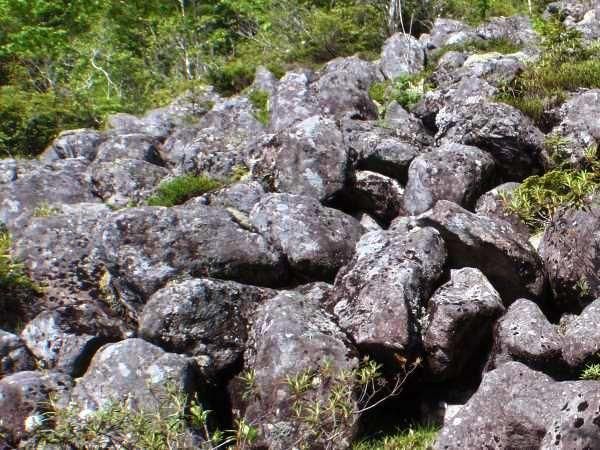 Wind cave (風穴) near Nukabira Lake, eastern Hokkaido, on June 27 2013. The vegetation is specific, due to the temperature. |
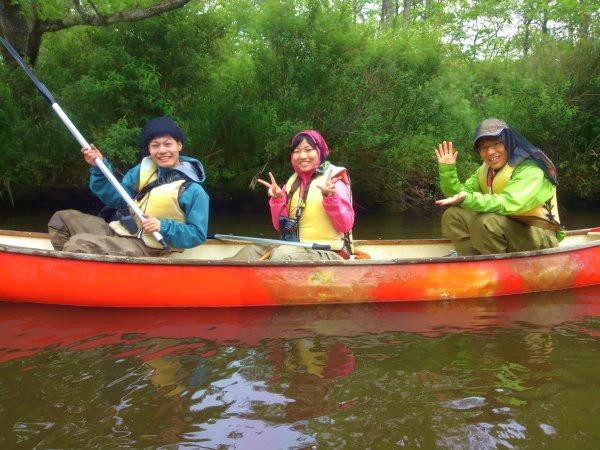 Training of stream and wetland surveys on June 3 2014. The river is enclosed by an alder forest. |
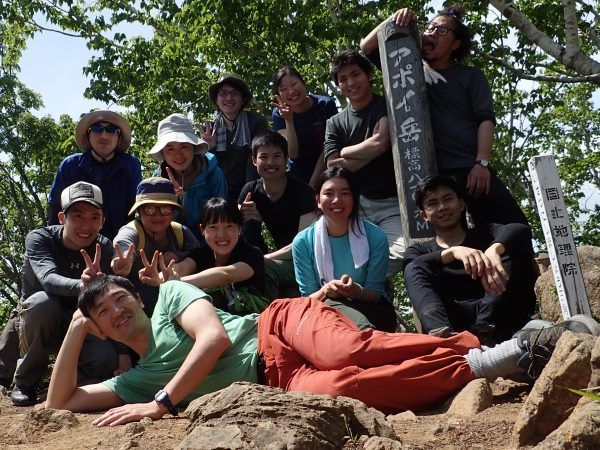 observed a specific alpine ecosystem developed on Mount Apoi on June 15 2016 |
Course objectivesTo learn identification of major plant and animal species, and techniques on ecological and meteorological research with regional scale.Course goalsTo understand the principles of identification and methods on ecosystem research.Course schedule
|
Guidance 2024 (内容)Closed/Finished Date: April 24 (Wed.)Time: 16:30- (probably less than 1 hour) Room: D103 Because we will explain the content, cost, notice, etc. in the guidance, students who wish joining the field trip must attend the guidance. There is the upper limit of number of attendants. If you are unable to attend the guidance, it is necessary to inform the person in charge (Sato; see the bottom) in advance. Contact: (Ext 2283) |
Schedule in 202523 7:30 leave - Satsunari River (UAV, weather, etc.)
Bansei Coast (coastal plants) Sarabetsu - lecture 25 7:30 Streamside - AMeDAS - bird/terrestrial insect - lecture26 7:30 Recovering instruments - lecture - sorting insect
Data arrangement - presentation preparation Schedule in 202424 about 13:00: gather at KIX - move to the station (3-4 hr)setting up the instruments / evening lectures 25 09:00 Nanki Kumano GeoPark
Ichimiaiiwa - Shiono Cape, AMEDAS - Kushima Island 27 09:00 survey along a stream / data arrangement - discussion 28 08:30 examination - move to KIX (breakup) Schedule in 202326 08:45 leave - ToEF (UAV, fish, weather, etc.)27 08:30 Survey in ToEF 28 08:30 Mount Fuppushi 29 08:30 Atsuma coast - AMeDAS - ToEF - preparation of presentation 30 09:00 presentation - exam - GSES Schedule in 202227 08:45 leave - Tomakomai Experimental Forest (ToEF) - lecture28 08:00 Mount Tarumae - AMeDAS - ToEF - lecture 29 06:00 ToEF(bird) - Atsuma Coast/Mukawa - ToEF (measurements) - lecture - data arrangement 30 08:00 ToEF (recovering the instruments) - preparation of presentation - exam (bird) 01 08:00 presentation - exam - GSES |
Schedule in 202121 08:45 Lecture - campus - Toyohira River (setting up insect traps and meteorological instruments)22 07:00 Mount Moiwa - meteorological observatory 23 08:00 Campus - lecture - preparation of presentation 24 08:00 Toyohira River - examination - data analysis 25 08:45 preparation of presentation - presentation - examination Schedule in 202013 09:00 Campus - Toyohira River (setting up insect traps and meteorological instruments)14 05:00 Campus - Toyohira River (bird watching, three round-trips) 15 07:00 Mount Moiwa - Zenibako Coast 16 09:00 Recovered the instruments - data check and analysis - pre-presentation 17 09:00 Presentation - examination Schedule in 201924 7:30 leave - AMeDAS - Shibecha Experimental Forest, established insect traps and weather stations - on plant taxonomy25 measurement - on insect and weather 26 Mount Mashu - on insect and weather 27 collected datan, recovered the instruments - data check and analysis - on aquatic insect and weather - presentation 28 exam - AMeDAS - re-exam - GSES (Hokkaido-styled BBQ party) |
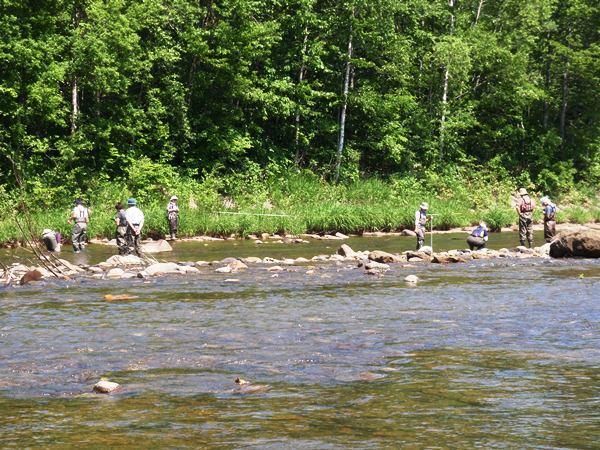 on Teshio River in 2012 |
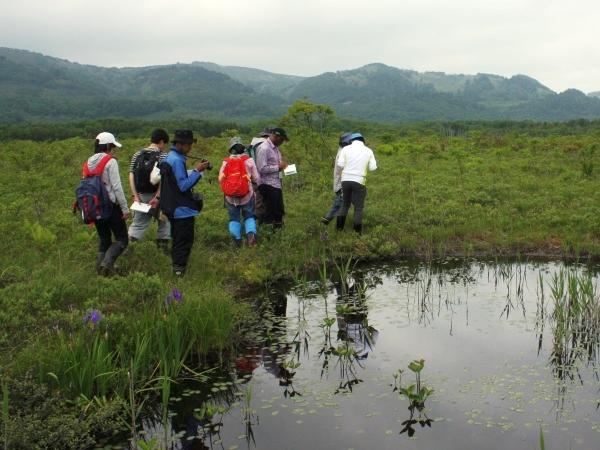 In Shizukari wetland on June 15 2015. |
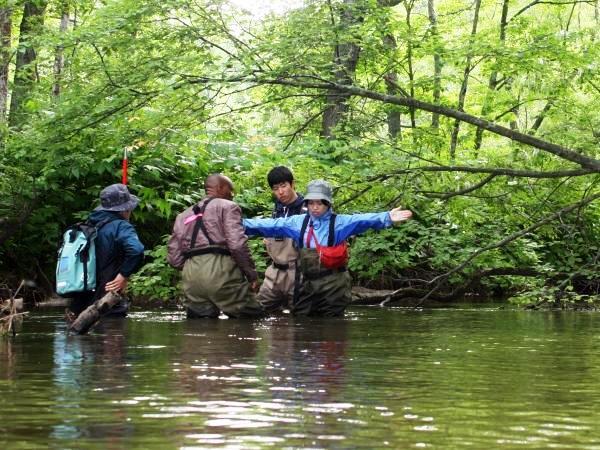 Practice of stream survey on June 17 2015. |
201825 8:30: leave - AMeDAS - Uryu Experimental Forest (UEF), established insect traps and weather stations - on plant taxonomy26 8:30: observation of UEF - practice on stream ecosystems 27 8:30: Matsuyama wetland (bog) - checked instruments - on climate 28 8:30: recovered the instruments - data check and analysis - on aquatic insect taxonomy 29 8:30: Presentation and exam - re-exam - GSES (Hokkaido-styled BBQ party) 201726 8:30: leave - Furano EFUT, established insect traps and weather stations27 7:00: Mount Tokachi 28 8:30: sweeping along Sorach River → recovered traps 29 8:30: aquatic insect and fish → Recovered all the loggers and traps → data analysis 30 8:30: presentation and exam → re-exam → 16:15 GSES (Hokkaido-styled BBQ party) 201613 8:30: Leave → Uryu Experimental Forest → established insect traps and weather station14 9:00: Shunbetsu River → measurements 15 8:30: Mount Apoi 16 9:00: Sweeping → data analysis, recovered traps and loggers → mini-presentation 17 8:30: Preparation of presentation → presentation/exam → re-exam → GSES 201515 8:30*: Leave → Shizukari Wetland → Sunasaki Sand Dune → Store → Usujiri16 8:30: Insect traps → Mount Koma 17 8:30: Hakodate Meteorological Observatory → O-numa Lake 18 8:30: Recover traps, sweeping → Data analyses 19 08:40: Exam. → 11:30 Leave → 17:50 GSES *: delay due to a student |
2014 (June 30, Mon - July 4, Fri)Location: on and around Akkeshi Marine Station, Hokkaido UniversityRendezvous: at 7:00 in front of GSES (Do not forget to carry your lunch) 30 (M) 7:00: Akkeshi (arbitrarily observations, arrival at 15:00) setting up equipmetns Lecture: how to identify plants 01(T): Climate profile, Daikoku Island, sampling planktonsLecture: aquatic insects 02(W): Kushiro Climate Observatory, reseraches on riverine ecosystems, bird watchingLecture: climate data 03(T): Research on stream ecosystems, insectsLecture and data analysis 04(F): Exam. (plant, aquatic insect, and climate) / Re-examReturn GSES 2013 (June 24, Mon - 28 Fri)Location: on and around Ashoro Experimental Forest, Kyushu UniversityRendezvous: at 8:30 in front of GSES (Do not forget to carry your lunch) 24 (M) 8:30: Obihiro·Otofuke (arbitrarily observations, arrival at 17:00)
Tomamu: aquatic insects, and fish Lecture: aquatic insects 26(W): Satsunai River and others: reseraches on riverine ecosystems, bird watchingLecture: wind caves, climate data 27(T): Mount Higashi-nupukaushinupuri and Komadome Lake: research on wind caves Lecture: taxonomy 28(F): Exam. (plant, aquatic insect, and climate)
Obihiro Climate Observatory |
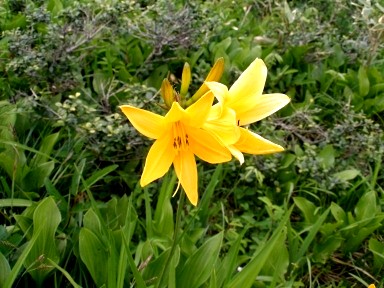 |
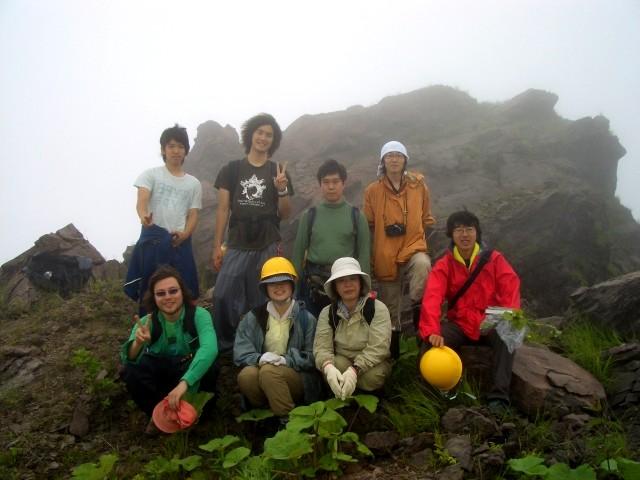 |
 |